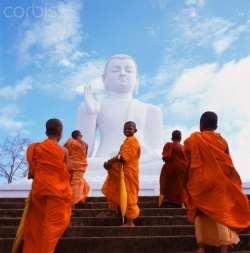Difference between revisions of "Paṭisambhidāmagga"
| Line 8: | Line 8: | ||
and each [[Vagga]] contains ten topics ([[katha]]). | and each [[Vagga]] contains ten topics ([[katha]]). | ||
| − | The treatment of the various topics is [[essentially]] scholastic in [[character]], and whole passages are taken verbatim from the [[Vinaya]] and from various [[collections]] of the [[Sutta Pitaka]], while a general acquaintance with the early [[Buddhist]] legends is assumed. (Published by the P.T.S. There is an index in J.R.A.S., 1908). | + | The treatment of the various topics is [[essentially]] {{Wiki|scholastic}} in [[character]], and whole passages are taken verbatim from the [[Vinaya]] and from various [[collections]] of the [[Sutta Pitaka]], while a general acquaintance with the early [[Buddhist]] {{Wiki|legends}} is assumed. (Published by the P.T.S. There is an index in J.R.A.S., 1908). |
A commentary [[exists]], written by [[Mahanama]], a [[Thera]] of [[Ceylon]], and called [[Saddhammappakasini]]. | A commentary [[exists]], written by [[Mahanama]], a [[Thera]] of [[Ceylon]], and called [[Saddhammappakasini]]. | ||
Revision as of 11:37, 21 December 2013
Paṭisambhidāmagga; The twelfth book of the Khuddaka Nikaya. It really belongs to the literature of the Abhidhamma type, and describes how analytical knowledge can be acquired by an arahant. It presents a systematic exposition of certain important topics of Buddhism. It is possible that, before the development of the extant Abhidhamma Pitaka, it passed as one of the Abhidhamma treatises.
The book consists of three Vaggas:
Maha Vagga, Yuganaddha Vagga Panna Vagga
and each Vagga contains ten topics (katha).
The treatment of the various topics is essentially scholastic in character, and whole passages are taken verbatim from the Vinaya and from various collections of the Sutta Pitaka, while a general acquaintance with the early Buddhist legends is assumed. (Published by the P.T.S. There is an index in J.R.A.S., 1908).
A commentary exists, written by Mahanama, a Thera of Ceylon, and called Saddhammappakasini.
